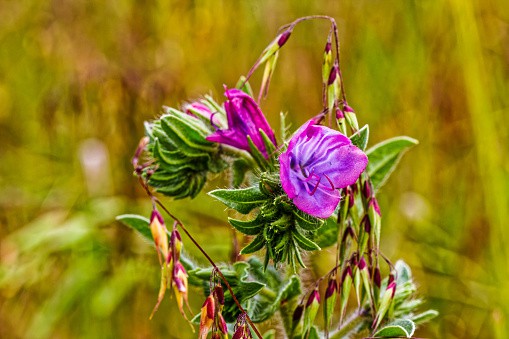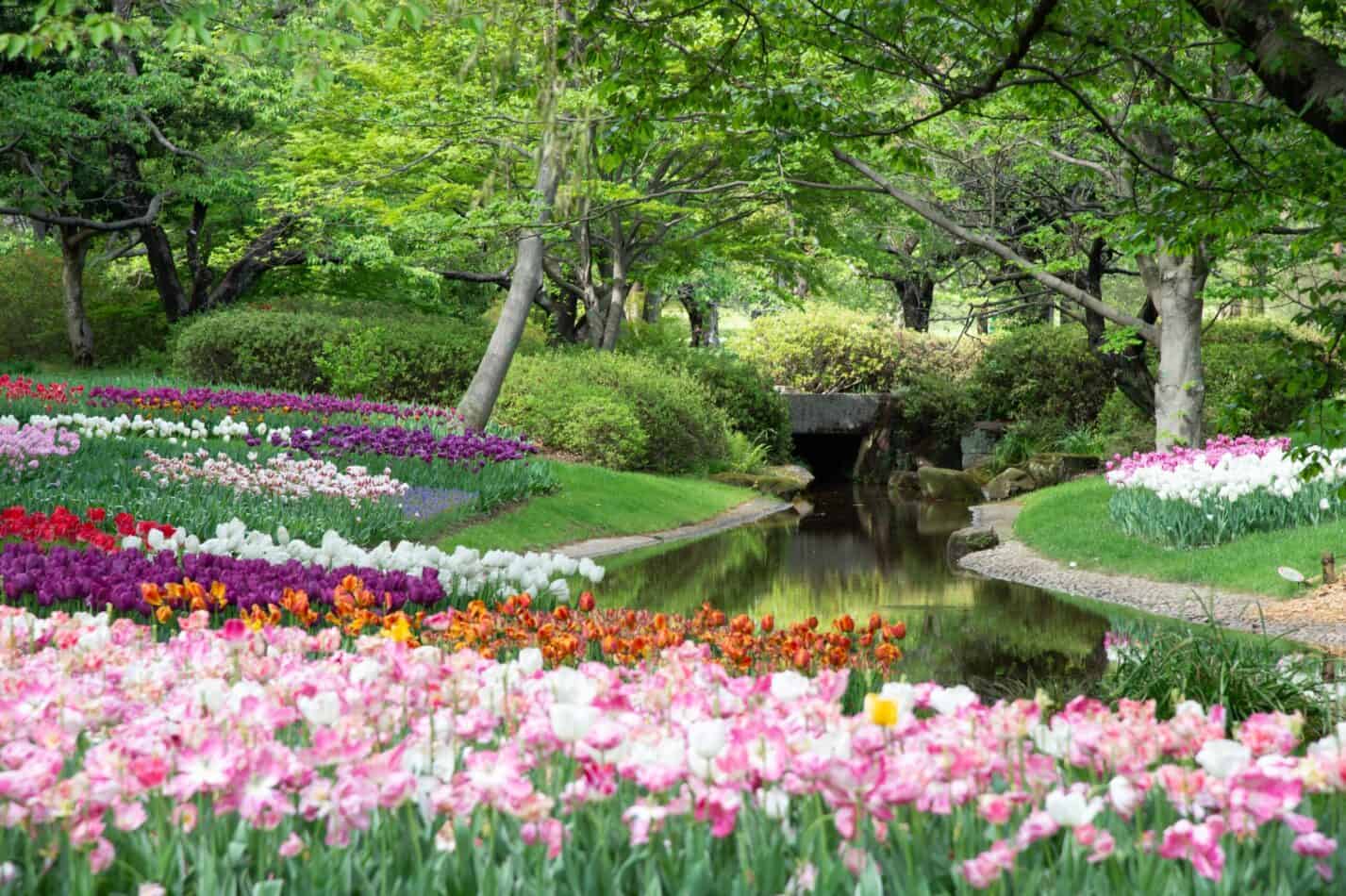Vipers Bugloss (Echium vulgare), also known as blueweed, is an annual or biennial flower that grows in an upright habit. It produces cylindrical spikes of bell-shaped flowers which are usually vibrant violet with pink nubbed stamens. It can grow up to 20 inches tall and is a British native. It is ideal for cottage gardens, naturalized gardens, beds, and borders. As it self-seeds freely, it is best to remove the flowering stems after the season if you want to keep it under control.
Family
Vipers Bugloss is a member of the Boraginaceae family, along with other popular garden plants such Borage, Comfrey and Forget-Me-Not.
Plant Type
Vipers Bugloss is a biennial or annual flowering plant.
Meaning and Symbolism
Vipers Bugloss is a particularly important flower in the mythology and symbolism of the United Kingdom. Due to its Latin name, Echium, it is often seen as a symbol for strength and luck. In rural areas of Britain, it is believed to bring good luck to families when it is planted near the home. In literature, Vipers Bugloss is often associated with fertility and is used to symbolize young and abundant love.
History, Mythology, and Religious Significance
Echium vulgare is believed to have been introduced to Britain by the Romans, and it was believed to have medicinal properties. It was often used to treat skin wounds and provide relief from eye ailments. Some people even ate them as food but they are now considered poisonous. In Religious texts and medieval paintings, Vipers Bugloss is often seen as a symbol of the devil. It was also used as an ingredient in ‘flying ointment’, a substance believed to facilitate the witch’s ability to travel to distant locations.
Flower Varieties and their Defining Characteristics
The Echium Vulgare species of Vipers Bugloss has several varieties, each with its own defining characteristics. These varieties include:
- Echium Vulgare ‘Red Stone’ – This variety has bright red flowers with white stamens.
- Echium Vulgare ‘Lemon Drop’ – This variety has bright yellow flowers with white stamens.
- Echium Vulgare ‘Blue Bird’ – This variety has deep blue flowers with white stamens.
How to Plant
Planting Vipers Bugloss is an easy task as long as you keep its preferences in mind. It thrives in locations that receive full sun and prefers a soil that is moist, well-draining, and rich in nutrients. It is not picky about soil pH balance, but it does need to be kept evenly moist. When planting Vipers Bugloss, it is best to sow them outdoors in late spring or early summer, ensuring that the seedlings receive enough sun throughout the growing season. They may also be transplanted outdoors any time after the last frost of the season.
How to Pot and Repot
Potting or repotting Vipers Bugloss is an easy task, provided you remember to use a potting soil with a good range of nutrients and a light texture that helps the soil to breathe. When potting, be sure to choose a pot that has a drainage hole, as Vipers Bugloss requires well-drained soil to prevent root rot. The roots of this plant should also be handled with care so as not to damage them. When repotting, it is best to keep the plant in the same size pot in order to avoid root shock.
How to Prune
Pruning Vipers Bugloss is essential for maintaining its good health and shape. Deadheading is recommended to keep the plant looking tidy, and to prevent premature seed formation. To prune, remove any dead flowers and any excess stems. Stems that are too long should also be trimmed back to a more manageable length. When pruning, it is important to make sure that at least two sets of new buds are left above the cut. This will help to maintain the plant’s shape while also encouraging new growth.
How to Propagate
Vipers Bugloss can be propagated in two ways: by seed or by division. The easiest way to propagate Vipers Bugloss is to sow the seed directly in the garden in early spring. Alternatively, the plant can be propagated by dividing the rootball in spring or autumn. When dividing the rootball, it is important to ensure that each piece contains both foliage and roots. The new plants should then be potted into individual containers, making sure that the soil is kept evenly moist.
Common Pests and Diseases
Vipers Bugloss is susceptible to a range of pests, including aphids and flea beetles. These pests can cause severe damage to the foliage leading to leaf discolouration and stunted growth. To prevent pest infestations, it is important to inspect the plant regularly, and to remove any dead or damaged foliage from the plant as soon as possible. Common diseases that can affect Vipers Bugloss include botrytis blight and powdery mildew, both of which can cause discolouration and stunted growth. Treating the plant with an appropriate fungicide or pesticide can help to prevent damage.
Three Frequently Asked Questions
- How do I harvest Vipers Bugloss?
Vipers Bugloss can be harvested to use in cut flower arrangements as soon as the flowers start to open. To preserve the flowers, it is best to harvest them in the early morning when they are still fresh. To harvest, carefully snip the stem with garden scissors and place the flowers in a vase, ensuring that the stems are submerged in water. - Does Vipers Bugloss need to be deadheaded?
Yes, Vipers Bugloss should be deadheaded to prevent any excess seed from forming. This will also encourage new growth as well as help to improve the overall aesthetic of the plant. - What is the best time to plant Vipers Bugloss?
The best time to plant Vipers Bugloss is in late spring or early summer. This will ensure that the plant receives enough sun throughout the growing season.
Table Fact Sheet
| Flower | Value |
|---|---|
| Vipers Bugloss | Echium Vulgare |
| Family | Boraginaceae |
| Plant Type | Biennial/ Annual |
| Mature Size | Up to 20 inches tall |
| Sun Exposure | Full sun |
| Soil Type | Moist, well-draining |
| Soil pH | Not picky |
| Bloom Time | Summer to early fall |
| Flower Color | Violet with pink stamens |
| Hardiness Zones | 2 to 9 |
| Native Area | The United Kingdom |
What we love from Amazon this week
Buy these wonderful flowers directly from Amazon:















